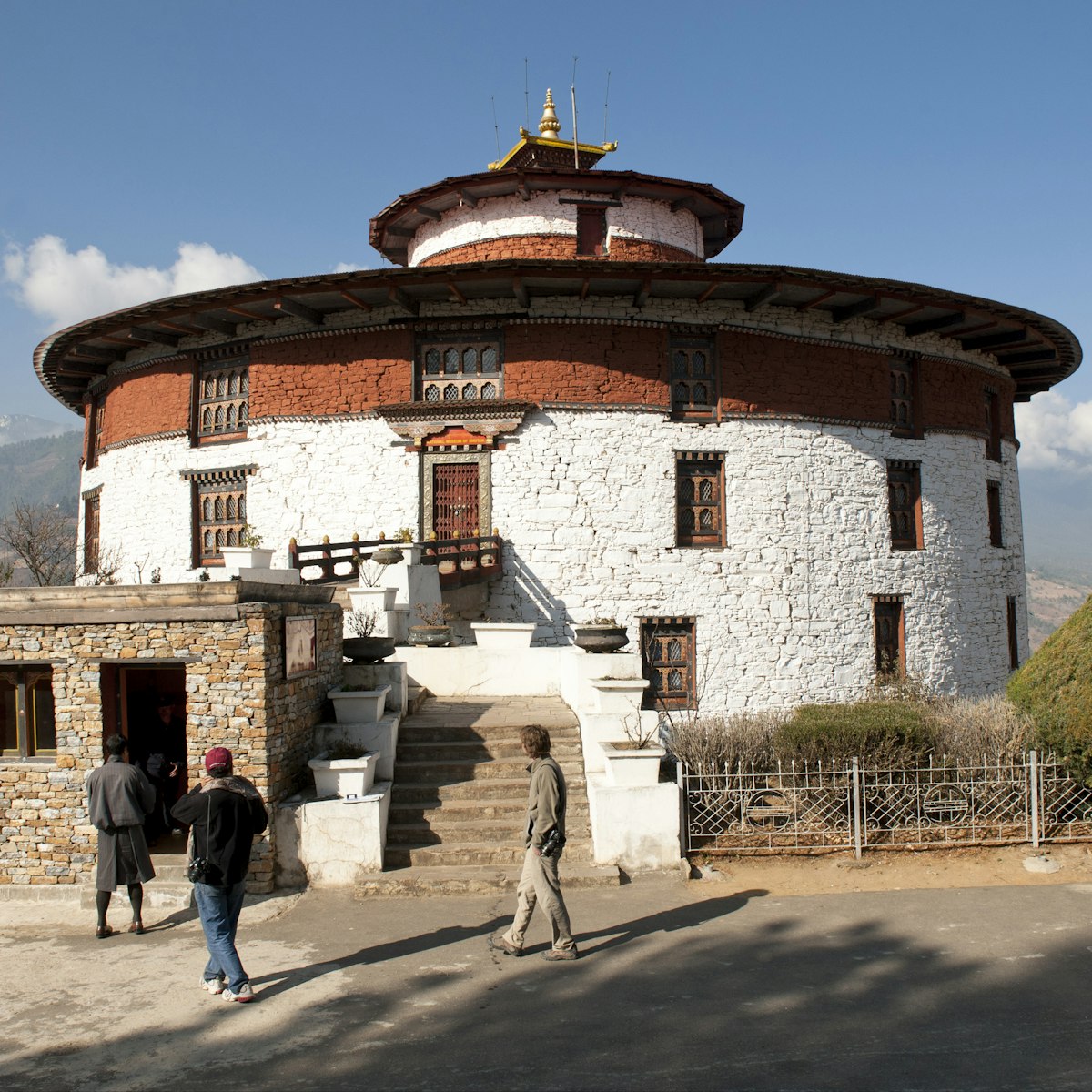About 1km north of Haa, just before the main bridge, a paved road branches east 1km to Katsho village, from where you can take a lovely 40-minute hike to Juneydrak hermitage (also known as Juneydrag). The cliffside retreat contains a footprint of Machig Labdrom (1055–1132), the female Tibetan tantric practitioner who perfected the chöd ritual, whereby one visualises one's own dismemberment in an act of 'ego annihilation'.
From Katsho village a trail follows the stream past the Chorten Dangrim mani (prayer) wall for 15 minutes to a two-legged archway chorten (known as a khonying). Cross the stream and ascend the trail through a charming rhododendron forest. At a red sign in Dzongkha script, take the trail to the left and climb up to a chorten that marks the entry to the hermitage. You'll need to find the caretaker in his nearby residence in order to gain access to the lhakhang. You climb up steep steps with the aid of a rope before squeezing between a stone entryway guarded by the faded rock painting of a green-faced demon.
From just below the hermitage, a rough trail scrambles up the hillside and curves round the exposed bluff. Don't attempt this if you are afraid of heights or if it's raining; simply return from Juneydrak the way you came. The trail curves around to Katsho Goemba, which has fine views down over Katsho village, where your vehicle can meet you. It's worth popping into the temple to see the fine antique thangkas (painted religious pictures, usually on canvas). Bring a thermos of tea to drink in the monks' treehouse just outside the goemba.
It's also possible to hike to Juneydrak from Wangtsa village, joining the main trail near the Chorten Dangrim. Figure on 2½ hours from Wangtsa to Katsho village.






